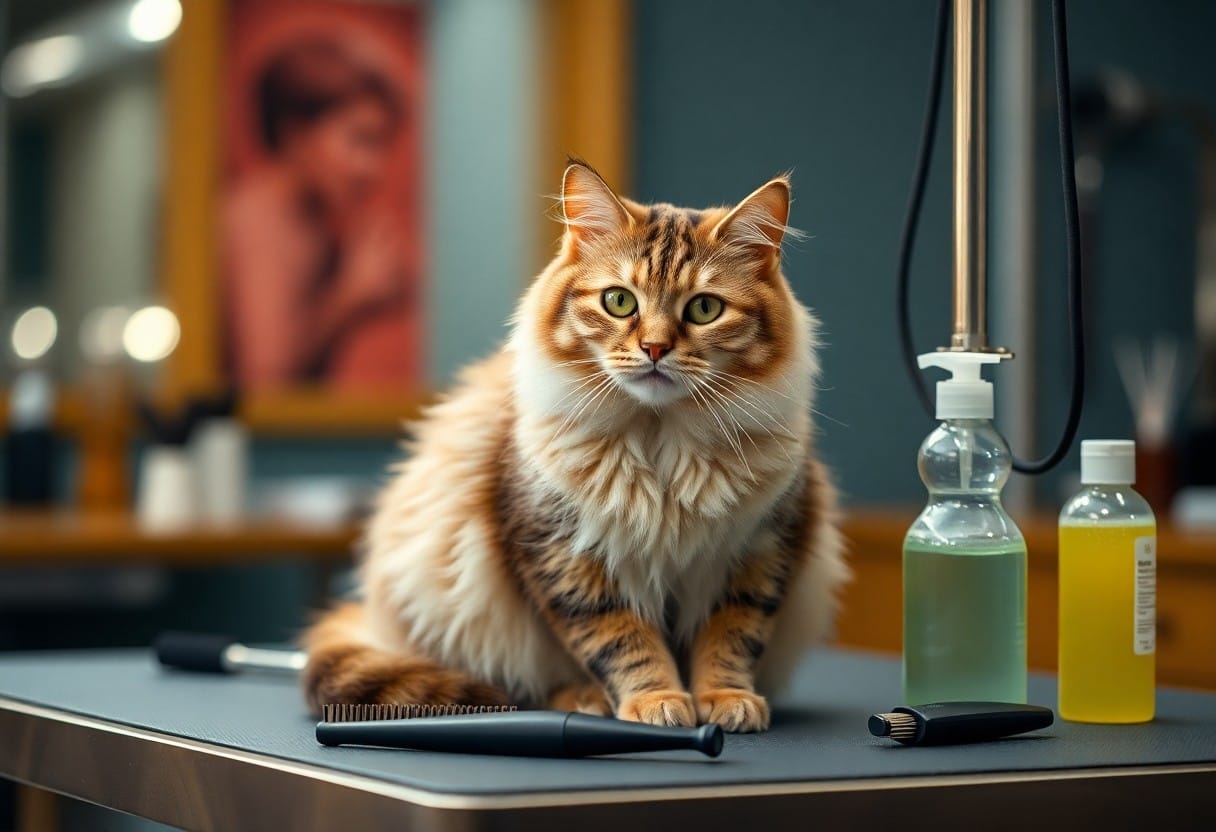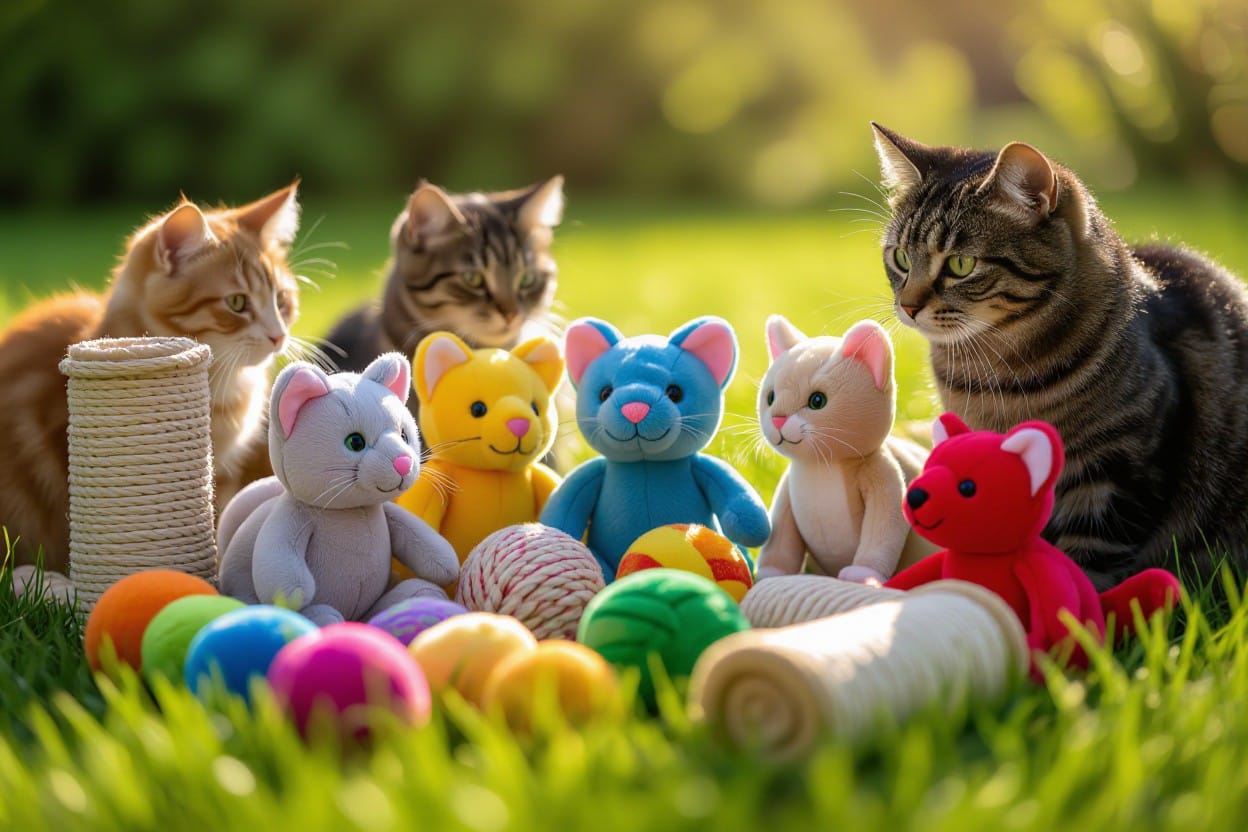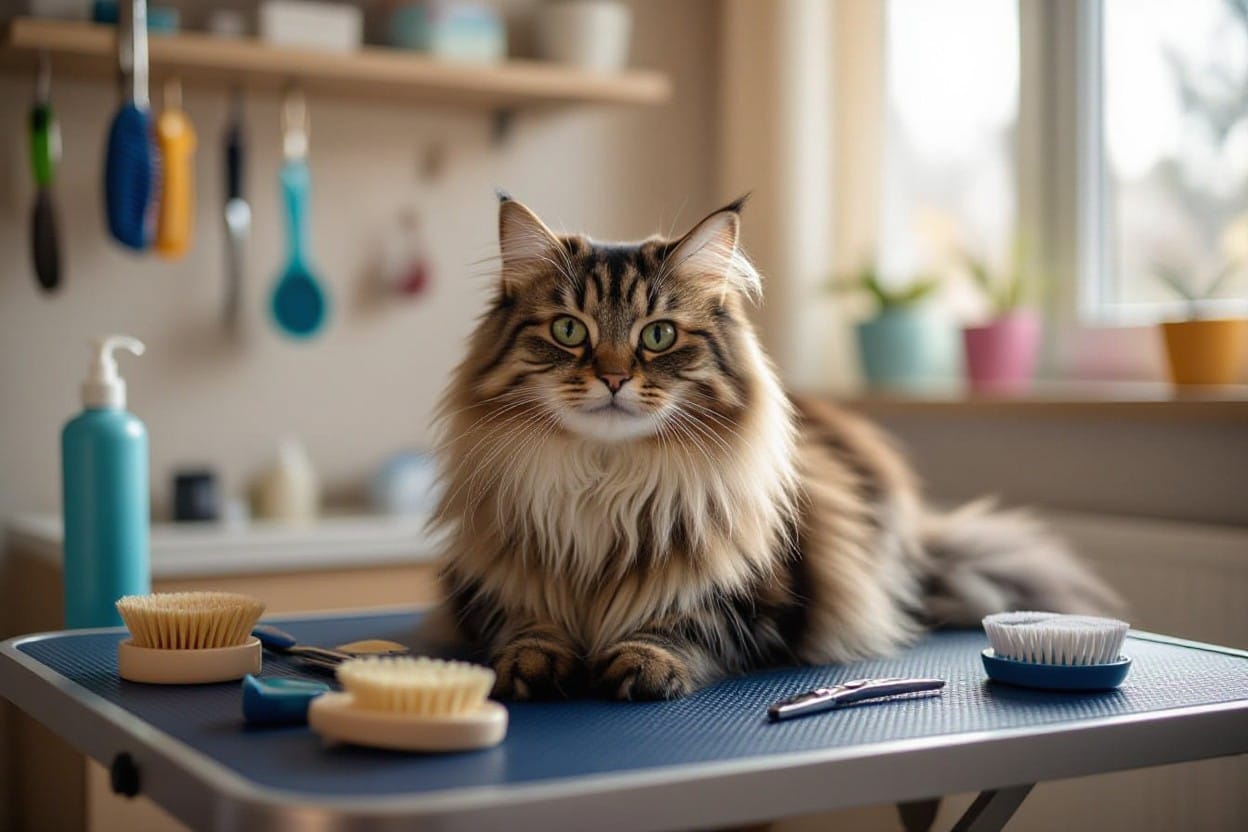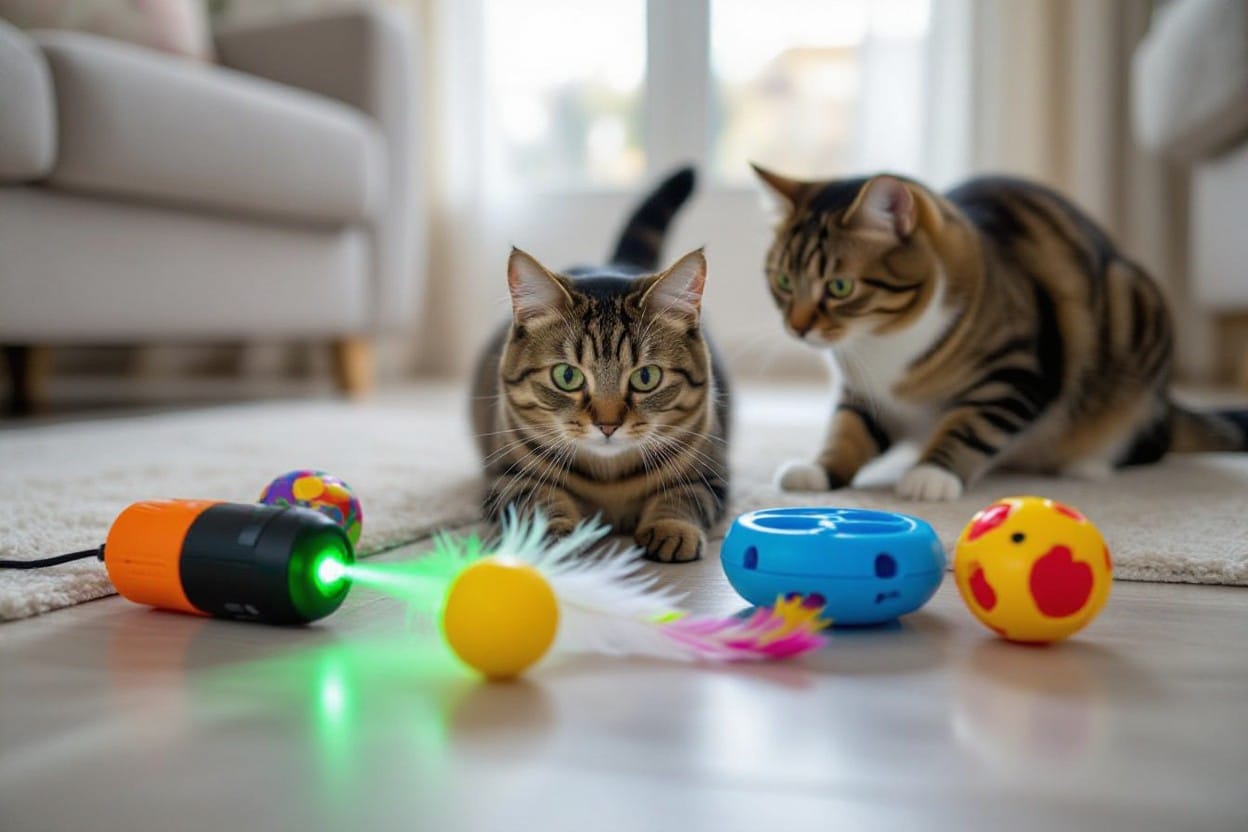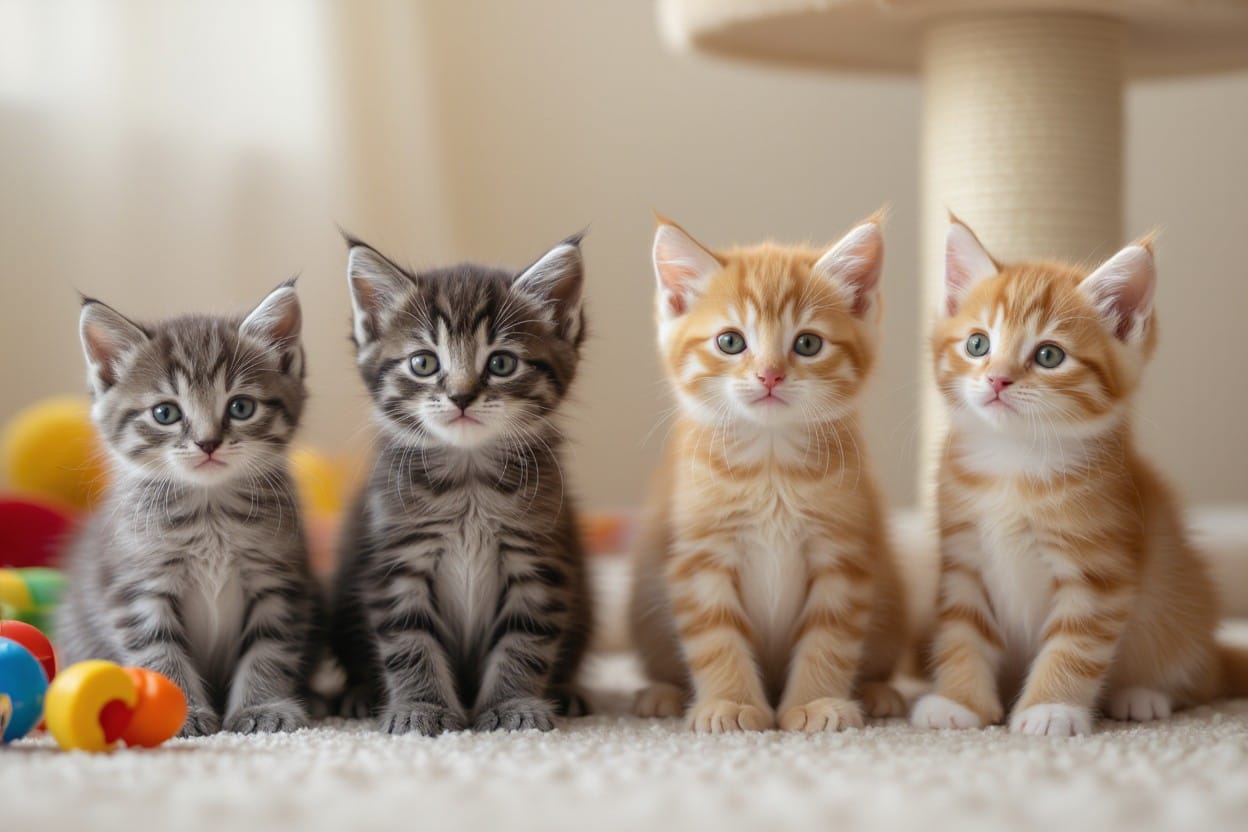Cats thrive in a clean and well-groomed environment, and as their owner, you play a vital role in this process. Regular grooming not only improves your cat’s health but also strengthens your bond with them. In this list, you’ll discover 10 expert grooming tips that will help you keep your feline friend looking and feeling their best. From brushing techniques to bath time crucials, these insights will equip you with the knowledge to maintain your cat’s coat and overall hygiene safely at home.
Key Takeaways:
- Regular brushing helps reduce shedding and matting, promoting a healthier coat and minimizing hairballs.
- Bathing your cat should be approached with care; using cat-specific shampoos and ensuring a stress-free environment can make the experience smoother.
- Proper nail trimming and ear cleaning are necessary parts of grooming that contribute to your cat’s overall hygiene and comfort.
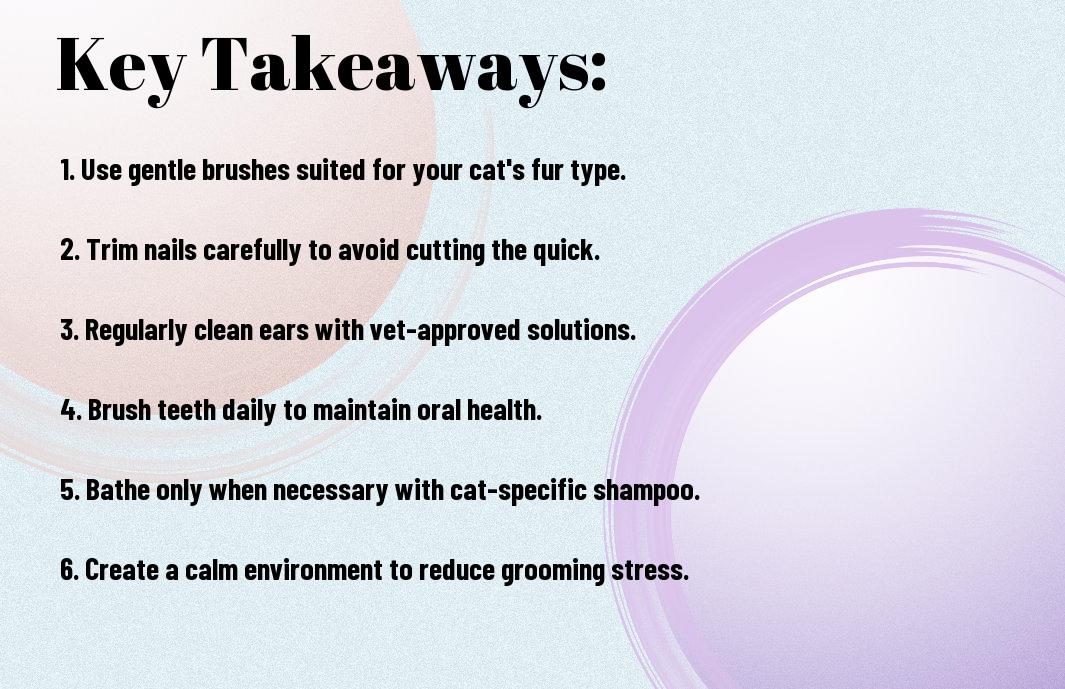
Regular Brushing Schedule
A regular brushing schedule is necessary for maintaining your cat’s coat and minimizing hairballs. By establishing a consistent routine, you can keep your feline friend looking and feeling their best while also enjoying bonding time together. Depending on your cat’s coat type, aim for brushing at least once a week, with more frequent sessions for long-haired breeds. This way, you’ll ensure their coat remains healthy, shiny, and free of debris.
Reduce Shedding
One effective way to manage your cat’s shedding is to incorporate regular brushing into your routine. Not only does brushing help remove loose fur, but it also distributes natural oils throughout their coat, promoting a healthier appearance. By doing this regularly, you can significantly reduce the amount of fur that ends up on your furniture and clothes, making your home cleaner and more comfortable.
Prevent Matting
The best way to prevent matting in your cat’s fur is to maintain a consistent brushing routine. Schedule regular grooming sessions to catch tangles before they become problematic. For long-haired breeds, pay extra attention to areas where mats are likely to form, such as behind the ears, under the legs, and along the belly. Adequate brushing can help you spot any tightly bound fur that might cause discomfort for your cat. Address these issues promptly by using a detangling spray or working them out gently with your fingers to keep your cat’s coat healthy and comfortable.
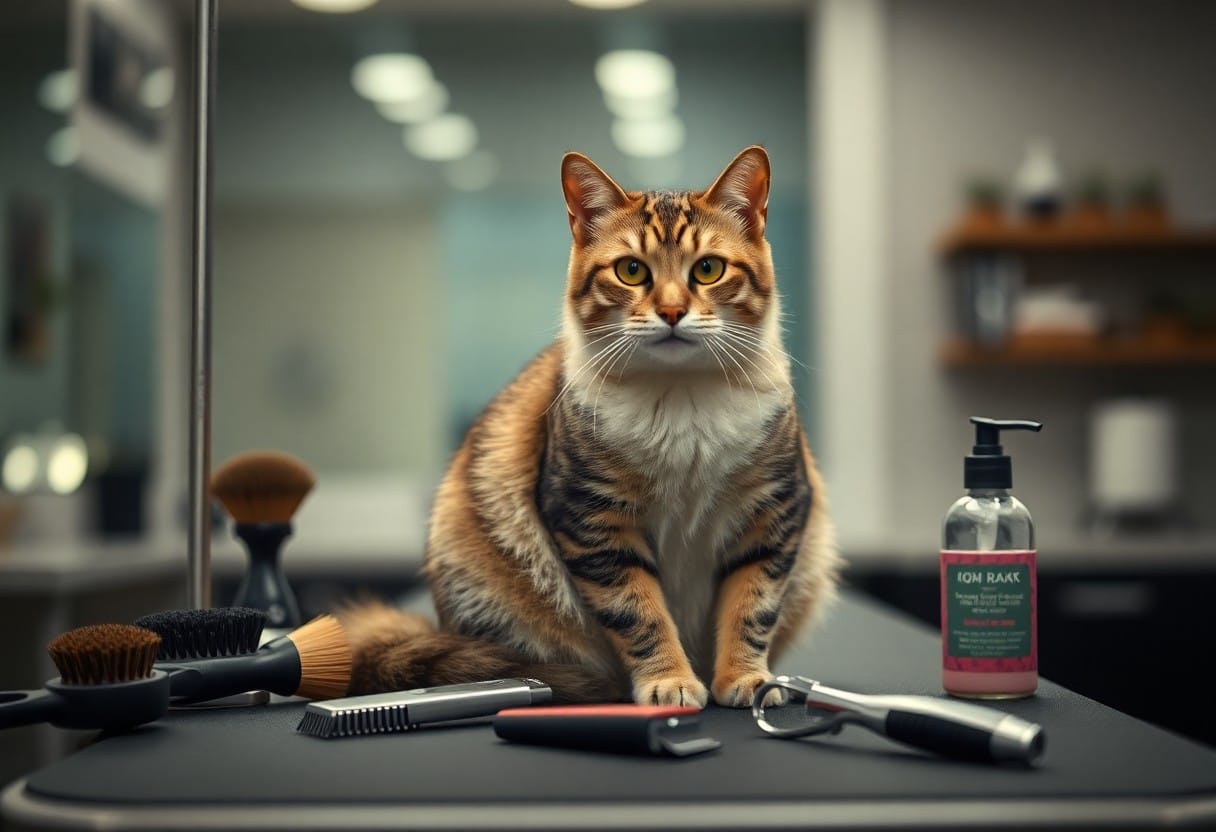
Bathe When Necessary
While regular grooming helps maintain your cat’s cleanliness, there are instances when a bath becomes necessary. If your cat gets into something sticky, smelly, or hazardous, bathing may be the best option to keep them healthy and comfortable. It’s vital to ensure that you only bathe your cat when needed, as frequent baths can strip their fur of natural oils and lead to skin problems.
Use Cat Shampoo
You’ll want to use a shampoo specifically designed for cats to avoid any adverse reactions. Cat shampoos are formulated to be gentle on your cat’s skin and coat, minimizing the risk of irritation. Avoid using human shampoo, as it can be too harsh and could leave your cat uncomfortable.
Ensure Warm Water
The water temperature is a vital aspect of bathing your cat, as it should be warm but not hot. You want your cat to be comfortable during the bath, so always test the water with your wrist or elbow to ensure it feels pleasant for them. Aiming for a temperature that mimics your body warmth typically works well.
Shampoo your cat thoroughly while ensuring the water remains warm and comfortable. Cold water can cause distress, while hot water may lead to burns, so aim for a balance that keeps your feline friend relaxed. Additionally, using warm water helps with the removal of dirt and grime by opening the pores on your cat’s skin, making the cleansing process effective without causing any discomfort. Keep the bathing area clear of hazards, and always monitor your cat to ensure they are calm during the entire bathing experience.
Nail Trimming Routine
To ensure your cat stays comfortable and healthy, establishing a regular nail trimming routine is necessary. Cats’ nails can become overgrown and cause injury to themselves or damage your furniture. Aim to trim your cat’s nails every 2-4 weeks, depending on their activity level and lifestyle. This routine not only keeps their nails at a manageable length but also fosters a bond between you and your feline friend.
Use Cat Nail Clippers
On selecting the right tools for the job, investing in high-quality cat nail clippers is key to achieving a safe and stress-free grooming experience. Look for clippers specifically designed for cats, such as scissor-style or guillotine-type clippers, to ensure you have better control while trimming.
Be Gentle and Calm
Clearly, keeping your cat relaxed during nail trimming can make a significant difference in the success of this grooming task. Creating a positive environment, free from stress and distractions, helps your cat feel safe and secure. Hold their paw gently but firmly, and speak to them in soothing tones to build trust.
A calm approach during nail trimming not only reduces your cat’s anxiety but also minimizes the risk of injury. Focus on gentle handling and positive reinforcement through treats and praise, which can help your cat associate nail trimming with a comfortable experience. If your cat starts to become agitated, take a break and try again later, ensuring you prioritize their emotional well-being throughout the process.
Clean Ears Frequently
Not only do clean ears contribute to your cat’s overall hygiene, but they also help prevent infections and discomfort. Regularly checking and cleaning your cat’s ears should be an imperative part of your grooming routine. Build this habit, and your feline friend will enjoy a healthier and happier life.
Check for Wax
Check your cat’s ears for an accumulation of wax, which can trap dirt and moisture, leading to potential infections. Look for any unusual discoloration or strong odors, as these might indicate a more serious issue. Keeping an eye on your cat’s ear health will help you catch problems early.
Use Cotton Balls
The safest way to clean your cat’s ears at home is by using cotton balls. They are gentle and effective at removing debris without causing harm to your cat. Wet a cotton ball slightly with a vet-approved ear-cleaning solution, and gently wipe the visible parts of the ear. Avoid inserting anything deep into the ear canal, as that can lead to injury or push wax further in. Be attentive to your cat’s reactions during the process, and stop if they seem uncomfortable. Regular ear cleaning can enhance their health and comfort, ensuring they feel their best.
Dental Hygiene Matters
Many cat owners often overlook their pets’ dental health, but it plays a vital role in their overall well-being. Poor dental hygiene can lead to serious health issues such as gum disease, tooth loss, and infections that can affect the heart and kidneys. By implementing a dental care routine at home, you can help prevent these problems and keep your feline friend happy and healthy.
Brush Teeth Regularly
You should brush your cat’s teeth regularly to maintain good dental health. Aim for at least two to three times a week, using a soft-bristled brush and toothpaste specifically designed for cats. This will help remove plaque and reduce the risk of tartar buildup, ensuring your cat’s mouth stays clean and healthy.
Provide Dental Treats
To further support your cat’s dental hygiene, consider incorporating dental treats into their diet. These treats are specifically designed to help reduce plaque and tartar buildup while satisfying your cat’s chewing instincts.
Dental treats can be a fantastic addition to your cat’s routine, as they not only promote oral health but also serve as a tasty reward. Look for products with the Veterinary Oral Health Council (VOHC) seal of approval, ensuring they are effective in reducing tartar and plaque. However, be cautious about treating your cat too frequently, as an excess of treats can lead to weight gain and other health issues. Always balance these treats with your cat’s overall diet and ensure fresh water is available at all times.
Clipping Loose Fur
Despite regular brushing, your cat will inevitably shed loose fur. Clipping is an excellent way to manage that excess hair while keeping your home clean and minimizing hairballs. Whether your cat has long or short fur, using the right tools and techniques will help you effectively trim away any loose sections. This not only improves your cat’s appearance but also promotes their overall well-being.
Use Grooming Scissors
The right pair of grooming scissors can make a world of difference in your cat grooming routine. Look for safety scissors with rounded tips to prevent accidental nicks. These allow you to carefully trim away matted or tangled fur without pulling or hurting your pet. Taking your time and using proper technique will ensure a smooth grooming experience.
Be Careful Around Skin
Any time you are clipping loose fur, it’s vital to be exceedingly cautious around your cat’s skin. Sharp scissors can easily cause cuts, especially in sensitive areas. Taking it slow and using a gentle touch is necessary when clipping to avoid any mishaps. If you find yourself in a tricky spot, it’s better to opt for a clipper with a protective guard.
Loose fur can sometimes hide skin irritations or matted areas that may not be immediately apparent. By being attentive, you can identify potential issues while grooming. Always keep in mind that your cat’s comfort is paramount; if you notice any signs of distress or discomfort while clipping, take a break. A calm environment and gentle approach go a long way in ensuring a positive grooming experience for you and your feline friend.
Eye Care Tips
Once again, focusing on proper eye care is crucial for your feline friend’s well-being. Regularly checking your cat’s eyes can help prevent a range of issues. Here are some important tips to keep their eyes healthy:
- Inspect your cat’s eyes daily for any changes.
- Keep the area around the eyes clean.
- Be aware of excessive tearing or redness.
- Consult with a vet if you notice unusual signs.
This will ensure your cat remains comfortable and healthy.
Wipe Away Discharge
The best way to maintain your cat’s eye health is by keeping their eyes clean and free from discharge. Use a soft, damp cloth to gently wipe away any build-up. Make sure to use a different area of the cloth for each eye to prevent spreading bacteria. Be gentle, as the eye area is sensitive.
Check for Irritation
With regular checks, you can quickly identify any signs of irritation in your cat’s eyes. Look for redness, swelling, or excessive tearing. If your cat shows these symptoms, it may not be just minor irritation but potentially something more serious.
You can address eye irritation by examining for foreign objects, such as dirt or hair, that could be causing discomfort. If you notice your cat frequently pawing at their eyes or exhibiting signs of acute pain, it’s crucial to seek veterinary attention as untreated issues can lead to more serious health complications. Keep an eye out for signs of infection, like yellow or green discharge, and don’t hesitate to consult a vet, as prompt action can often prevent worsening conditions.
Selecting Proper Tools
Keep in mind that having the right tools is necessary for successful cat grooming. Various grooming instruments cater to the different needs of your feline companion, from brushes to clippers. Investing in high-quality tools not only simplifies the grooming process but also ensures a comfortable experience for your cat. Always prioritize ergonomics and functionality to make grooming enjoyable for both you and your furry friend.
Use Quality Brushes
On the market, you can find an array of brushes tailored for different cat fur types. Choosing a quality brush specifically designed for your cat’s coat ensures effective detangling and reduces the risk of skin irritation. Opt for brushes that are gentle yet effective in removing loose hair, dirt, and debris, making grooming a truly rewarding experience.
Choose Comfortable Clippers
Assuming you decide to use clippers, it’s vital to select a pair that feels good in your hand and is suited for your cat’s fur type. Prioritize clippers that are silent and heat-resistant, as these features will minimize stress during grooming sessions. A comfortable grip allows you to maneuver effortlessly, ensuring that you can groom your cat safely and efficiently.
To ensure a positive grooming experience, invest in comfortable and quiet clippers designed specifically for cats. Look for ergonomic handles to reduce hand fatigue, especially during longer grooming sessions. Additionally, heat resistance is vital to prevent discomfort for your cat, as clippers can become warm during use. Regularly check the blades for sharpness and cleanliness to avoid pulling at their fur and causing unnecessary pain. Enhancing grooming with the right tools not only makes the process smoother but also builds trust between you and your pet.
Observe Behavior Changes
Unlike many pets, cats are subtle when communicating their feelings. As a responsible pet owner, it’s necessary to observe any changes in your cat’s behavior after grooming sessions. These changes can indicate discomfort or stress, which can impact their overall well-being. If you notice signs of distress or discomfort, it’s vital to take immediate action to address these concerns, ensuring a more positive grooming experience for your feline friend.
Look for Stress Signs
Changes in your cat’s behavior can often indicate stress. Look for signs such as excessive grooming, hiding, and changes in eating habits. A stressed cat may also exhibit aggressive behavior or aimless pacing. By identifying these stress signs, you can adapt your grooming techniques to create a calmer environment for your cat, ensuring a more pleasant grooming experience.
Consult a Vet if Needed
Stress in your cat may warrant professional attention. Behavior changes such as persistent aggression, severe anxiety, or refusal to eat can signal underlying health issues. Consulting a veterinarian can help you rule out any medical conditions that could be affecting your cat’s behavior and provide you with tailored advice for your unique situation. Addressing these underlying issues promptly can lead to a happier, healthier cat, and a more harmonious grooming routine.
Conclusion
The 10 expert cat grooming at home tips you’ve learned can transform your cat’s grooming routine into a positive experience for both you and your feline friend. By implementing these techniques, you can effectively maintain your cat’s coat, prevent matting, and enhance their overall well-being. Regular grooming not only promotes a healthy coat but also deepens the bond between you and your cat. With patience and practice, you’ll become proficient in grooming your pet, ensuring they look and feel their best every day.
FAQ
Q: What are the basic grooming tools I need for grooming my cat at home?
A: To groom your cat effectively at home, it’s necessary to have the right tools. The basic tools include a good quality brush suitable for your cat’s fur type (like a slicker brush for long-haired breeds or a bristle brush for short-haired cats), nail clippers, cat-safe shampoo, a grooming glove or mitt, and a comb for tackling any tangles. Additionally, having a pair of scissors can be useful for safely trimming fur in sensitive areas. Ensuring you have these tools will make the grooming process more efficient and enjoyable for both you and your cat.
Q: How often should I groom my cat at home?
A: The frequency of grooming largely depends on your cat’s coat type and shedding pattern. Long-haired cats typically require grooming every 2 to 3 days to prevent mats and tangles, while short-haired breeds may only need grooming once a week. However, during shedding seasons (usually spring and fall), more frequent grooming can help manage loose fur. Regular grooming not only keeps your cat’s coat healthy but also provides an opportunity for you to check for signs of skin issues or parasites.
Q: What are some tips to make the grooming experience less stressful for my cat?
A: Making grooming a positive experience for your cat can help reduce stress. Start by choosing a quiet, comfortable area to groom, and ensure your cat feels secure. Use treats and praise to create a pleasant association with the grooming process. Begin slowly by brushing a small section of fur at a time, gradually increasing the duration as your cat becomes more comfortable. Consider using a grooming mitt or glove, as this can be gentler and can also provide a massage-like effect. Patience is key, so take breaks if your cat appears anxious and always approach grooming with a calm demeanor.
